#Update macfuse
Explore tagged Tumblr posts
Text
Update macfuse

#Update macfuse install
#Update macfuse update
#Update macfuse download
Lrwxr-xr-x 1 antoine staff 13 14 mai 05:58 libosxfuse_i64.la -> /Volumes % kextstat | grep osxfuse Lrwxr-xr-x 1 antoine staff 16 14 mai 05:58 libosxfuse_i64.dylib -> libosxfuse.dylib Lrwxr-xr-x 1 antoine staff 18 14 mai 05:58 libosxfuse_i64.2.dylib -> libosxfuse.2.dylib rwxr-xr-x 1 antoine staff 933 libosxfuse.la this article is printed, MacFUSE has already been updated several times.
#Update macfuse update
Lrwxr-xr-x 1 antoine staff 18 14 mai 05:58 libosxfuse.dylib -> libosxfuse.2.dylib position of software update engine of choice for independent developers. rwxr-xr-x 1 antoine staff 973488 libosxfuse.2.dylib rwxr-xr-x 1 antoine staff 971 7 avr 07:59 libfuse.la Lrwxr-xr-x 1 antoine staff 15 14 mai 05:25 libfuse.dylib -> libfuse.2.dylib rwxr-xr-x 1 antoine staff 531808 7 avr 07:59 libfuse.2.dylib Vboximg-mount: error: Failed to load the fuse library, rc=VERR_FILE_NOT_FOUNDīut I have everything /Volumes % ls -la /usr/local/lib | grep fuse
#Update macfuse install
I think it'd be really nice if VirtualBox somehow provided an option for users who already have macFUSE to somehow integrate with it, though. came up with binary version (in DMG) of MacFUSE and ntfs-3g, ready to install (credit to ShadowOfGed at AppleNova). (I’ve never built a Linux kernel module before, let alone a macOS kext) Sad to see it take this path, but I’m sure the author had his reasons, and I really don’t want to “second-guess an operation from an armchair,” as David Strathairn’s character says in that Bourne movie. NTFS-3G Requires a build from source for anything newer than 2010. Starting with the 3.10.0 release, redistributions bundled with commercial software are not allowed without specific prior written permission. Updated at May 2015, with current solutions. I also want to point out that, unfortunately, macFUSE has ceased to be open-source, since version 3.10: OSXFUSE is not required to run Boxcryptor anymore. I will say that I haven’t tried this (yet), so I have no idea if such an outdated kext will even work on macOS 12 (Monterey). Find all Boxcryptor updates and information about changelogs, maintenance window, network access and. Right now, I suppose the best way to be able to use vboximg-mount is to reinstall the flatpack (. (See this pull request on the Homebrew Cask GitHub page). I’d also like to add - for the benefit of any Homebrew users who might end up scratching their heads like me - that Homebrew also deselects the default OSXFUSE option in the flatpack installer.
After the machine boots, try veraCrypt again.Note that the VirtualBox (VBox) 6.x installer also comes with its own FUSE for macOS (OSXFUSE) installer, which runs by default.
(The OSXFUSE prefpane isnt it thats for updating OSXFUSE.). If it is there, click on it and then reboot the machine. I wasnt aware that either Fuse4X or OSXFUSE had created an updated version of this GUI.
If issue persists, go to "System Preferences -> Security & Privacy -> General" and see if there is an allow button at the bottom for 'Benjamin Fleischer".
After reboot, try to use VeraCrypt again.
Regardless if the message appear or not, reboot the machine (important step). Latest reported support status of macFUSE on Apple Silicon and Apple M2 and M1 Ultra Processors.
Normally you should see the message about allowing osxfuse extension in "System Preferences -> Security & Privacy -> General".
open again osxfuse installation dmg and this time launch the installer.
Double click on it and follow the wizard to remove osxfuse. After it opens, you will find "Uninstaller" file.
#Update macfuse download
For that, download osxfuse of the same version that is already installed (either 3.11.2 or 4.0.3), open installation dmg but instead of clicking on the installer, double click on the "Extras" folder. I have not used MacFUSE and related software through either MacPorts or MacFusion, so I cant comment much there.
completely uninstall osxfuse using its official uninstall script. After installing Apple Security Update 2007-007 1.0 via Software Update, performance of my sshfs-mounted filesystem seems slower, with quite frequent beachballs when opening or saving files.
Moreover, for those having issue with osxfuse error after performing an upgrade, I propose the following procedure to fix it: Also VeraCrypt is not compatible with both osxfuse 3.11.x and 4.0.3. Version 1.24-Update8 was published based on contribution and which fixes this issue.

0 notes
Text
Update macfuse

Update macfuse install#
Update macfuse pro#
Update macfuse code#
Update macfuse windows#
Using the options above the share can be unmounted via the finder. I created a folder at ~/mount where I have created empty directories for common shares. The path for the mountpoint can be any empty directory on your system. If you want the share to show up in the Finder you'll need to pass in some arguments to the sshfs command, e.g.: sshfs /PATH/TO/MOUNTPOINT -oping_diskarb,volname=NAMEOFMOUNTINFINDER
Update macfuse windows#
my main interest is finding something that performs better than mounted Windows file shares. So far I've had no trouble with the mounted shares, and I'm working on benchmarking VS mounted smb shares. Instead I followed the instructions to compile everything from source which were linked from the original post: I chose not to use the package installer since the site says it's purely a one off, I assume to get folks trying out FUSE. I'm thrilled to see that FUSE has been ported, ssh file systems are a blessing. There's a lot of promise in MacFUSE, but I think I'll wait a couple generations before trying it again! The only extra step I took was to also remove the MacFUSE receipts from /Library -> Receipts.
Update macfuse pro#
I also checked the programs listed in the removal script against my MacBook Pro (which hasn't ever had MacFUSE installed), and found no overalp (so nothing listed there is used by anything else). I'm posting this hint mainly to say that I indeed tried the removal script posted there, and it seems to have worked well. After some rooting around on the MacFUSE site, I found these removal instructions on the Issues tab. Unfortunately, there's no uninstaller included with the disk image distribution. I also had two kernel panics when I tried to unmount a mounted file system, so I decided to remove MacFUSE for now. In particular, it seems not to interact well with Path Finder (sshfs connections don't show as mounted volumes, for instance, unless they're in /Volumes, but they will do so in the Finder). I tried it last weekend, and while I was generally thrilled with it (it's amazingly handy being able to work in remote folders as if they're local), I had some issues.
Update macfuse install#
Is this going to impact macFUSE? Is there a risk that macFUSE 4.2.Last week, we ran this hint about using MacFUSE to install sshfs, which lets you mount ssh-connected servers like regular folders in the Finder. ZDNet | Apple deprecating macOS kernel extensions (KEXTs) is a great win for security, and it sounds like the message is that Apple wants to phase out support for kernel extensions, and have developers migrate to System extensions instead. I’m looking at Apple’s Deprecated Kernel Extensions and System Extension Alternatives article, as well as In case you run into any issues on macOS 12, please open a new ticket.Ĭan you please comment on the status of macFUSE’s use of kernel extensions (kexts) in macOS 12 Monterey? The new macFUSE 4.2.0 release adds experimental support for macOS 12.
Update macfuse code#
Also: I was offering to turn those code contributions back to you, closed-source, not release them myself. I don't disagree with you looking to make a living off your work, I'm just asking you to let me fix it myself if you can't do so in a timely fashion, but you've done so, so it's a moot point. As you've moved to a for-profit model, I'd think it goes without saying I'm not going to be taking on any financial strain the project maintainer was not willing to. I'm sorry, I believe you misunderstood me, I was only offering help as far as updating osxfuse to run on macOS Monterey, not making a commitment to help out long-term. the open source components of macFUSE, if you are interested. However, there are areas you could help with, e.g. I will not release the source code of the kernel extension and risk the project's funding in hope that it might turn out differently this time. What happens after your off time ends, when you have less time to spare? I accepted that this would prevent others from contributing code to the closed source components. Long story short, the only remaining option was going closed source to improve the project's funding so that I could spend more time working on it. Back when macFUSE was still open source, I was looking for help, but there were no regular contributors besides me. You are taking my two-year-old comment out of context. Soooo, I'm guessing the whole "oh if another developer experienced in kext development would help I'd be glad but nobody will" is a load of crap?

1 note
·
View note
Text
Macfuse tuxera

#MACFUSE TUXERA INSTALL#
#MACFUSE TUXERA 64 BIT#
#MACFUSE TUXERA PATCH#
#MACFUSE TUXERA SOFTWARE#
#MACFUSE TUXERA CODE#
> I still can't reproduce your problem, but this seems to be related > By build log I meant be the entire output of the build script. > Any suggestions for how I can compile sshfs? This is the filesystem > See the pkg-config man page for more details. > and SSHFS_LIBS to avoid the need to call pkg-config. > Alternatively, you may set the environment variables SSHFS_CFLAGS
#MACFUSE TUXERA SOFTWARE#
> installed software in a non-standard prefix. > Consider adjusting the PKG_CONFIG_PATH environment variable if you > configure: error: Package requirements (fuse >= 2.3 glib-2.0 > checking pkg-config is at least version 0.9.0.
#MACFUSE TUXERA INSTALL#
> Where is OSXFuse installed? I'm trying to compile and install sshfs > You can download a sshfs binary that works with OSXFUSE/MacFUSE at > You can find the HOWTO (MacFUSE) for compiling sshfs 2.2 at I will definitively look into this at some point. > looked at sshfs 2.3 but I guess it has to be patched as well to work > Amit patched sshfs 2.2 to be compatible with MacFUSE. > $ export PKG_CONFIG_PATH=/usr/local/lib/pkgconfig > Although /usr/local/lib is a standard prefix you have to run > I will include this link in my next repository update. > $ sudo ln -s osxfuse.pc /usr/local/lib/pkgconfig/fuse.pc > /Library/Frameworks/amework contains the Objective-C framework > /Library/Filesystems/osxfuse.fs contains the fuse kernel extension, > /usr/local/lib contains the low-level fuse libraries libosxfuse and > OSXFUSE is installed in various locations. To submit the OS X patches to this author or work with him on I'm just looking at the sshfs 2.3 changelog now, and if youĬare, here are the changes since 2.2. I just tried it initially not being aware of the need for I have no idea whether 2.3 even buys us anything,
#MACFUSE TUXERA PATCH#
Get it to configure), and not surprisingly the 2.2 patch doesn't Wouldn't compile (although with your instructions I was able to I also tried to compile sshfs 2.3 without the patch and it To this binary I'm also able to use Macfusion, so in the comingĭays I'll be testing OSXFuse. On Macports? Adding a symlink from the sshfs-static in Macfusion Project, which I'm assuming is also the same as the sshfs build Sshfs filesystems using the sshfs binary from the MacFUSE I wasn't seeing osxfuse because I hadn't installed it from theĭisk image built into /tmp. * Print usage information and version to stdout, not * Add option 'delay_connect': This will always createĮven if the connection to the server can't be * Allow mounting a single non-directory from the server * Check that the remote path specified refers to theįile as the mountpoint, i.e. This is only supported ifĪgainst libfuse-2.6 or later. * Check mountpoint and fuse options before starting an Sshfs hanging when the server is rebooted, for example. * Fix cleanup when ssh connection is terminated. (I've rewritten the author's email address below for his privacy)
#MACFUSE TUXERA CODE#
The OS X patches to this author or work with him on getting his code I'm just looking at the sshfs 2.3 changelog now, and if you care, It initially not being aware of the need for patching. I have no idea whether 2.3 even buys us anything, I just tried I also tried to compile sshfs 2.3 without the patch and it wouldn'tĬompile (although with your instructions I was able to get it toĬonfigure), and not surprisingly the 2.2 patch doesn't work withĢ.3. I have backups of these files, so I'll tread carefully :) I'm assuming is also the same as the sshfs build on Macports? AddingĪ symlink from the sshfs-static in Macfusion to this binary I'm alsoĪble to use Macfusion, so in the coming days I'll be testing Having done that, I'm able to mount sshfsįilesystems using the sshfs binary from the MacFUSE project, which I wasn't seeing osxfuse because I hadn't installed it from the disk Tuxera's build can be downloaded at I'm a moron.
#MACFUSE TUXERA 64 BIT#
> In my opinion it would be best to keep using Tuxera's MacFUSE build if you need 64 bit support or the latest official beta 2.1.5 of MacFUSE. There will be a alpha/beta release but I can't give you an exact timeframe when that will be the case. When that is done "all" MacFUSE filesystems should work with OSXFUSE out of the box (without the need to recompile them). > Currently I'm working on a compatibility layer for MacFUSE filesystems. Besides, there are no filesystems supporting OSXFUSE at the moment. It compiles fine under the right conditions but I cannot guarantee that it will actually work at this point. The whole thing is a work in progress and pretty much untested. > consumption, but when I attempt to build this project the following > I don't know whether or not this project is ready for public On Jul 1, 10:12 am, Benjamin Fleischer wrote:

0 notes
Text
Commander One Review
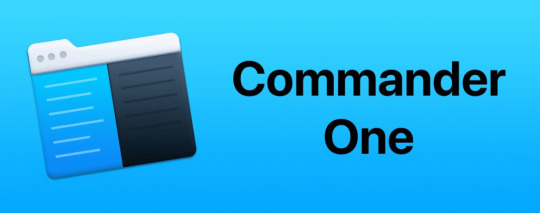
Record chiefs have consistently been on a predicament because of the overall client being OK with the inbuilt variation. In any case, assuming you at any point required more control and access, outsider document supervisors were indispensable to utilize, and along these lines, they were fundamental. From that point forward, we have progressed significantly, and with an all-new time of force clients, record directors needed to update themselves so they could stay aware of the necessities, and with all that included, they have turned into a superb decision for all power clients available.
For customary clients, the possibility of an alternate application to oversee records apparently appears to be an unnecessary idea. Locater is free, prepared straightforwardly into macOS, and does basically all that one may require. In any case, record supervisor applications are not, now, just worked for power clients, and whenever you have tasted the organic product, you would never return, and thus, we have presented to you the best Finder elective on the web.
Leader One 3.0
With its idiosyncratic name, Commander One sounds like an amazing record administrator that comes outfitted with a double window interface with help for quite a long time looks basically the same as its archetype. The main thing Bir Sur clients will see, indeed, you heard right, Big Sur is upheld. The application currently upholds macFUSE 4, and accompanies a refreshed Dark Mode and better solidness out of the container. This makes the application a banger and ideal for another option.
Leader One is full and stacked with the principle features for inconceivable Mac execution and record the executives. Regardless of whether you are a power client or just tracking down your methodology for transforming into an expert and totally controlling your gadgets, Commander One is your in all cases most ideal choice. The document supervisor gives a great deal of highlights, and these are:
Show stowed away documents
Officer One comes furnished with a convenient toolbar showing all imperceptible or secret documents on an envelope or drive. This assists you with finding any information that swines up the extra room, and I used to tidy up my drive by erasing any pointless records present.
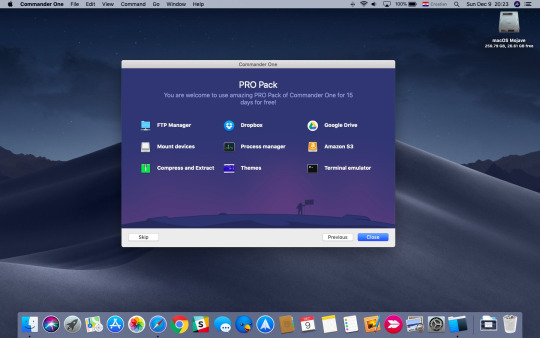
Text styles and Colors
The fundamental element and something we much appreciate, the document supervisor permits the choice to change the topic, complement tone, and textual styles for every one of the hobbyists searching for the bling.
History and Favorites
The set of experiences and top picks highlight had an effect by altering the inclination and getting to most-utilized records or organizers at an impulse. I additionally added a few decisions, including direct admittance to the media drive, making it simple for me to get to every one of the records, remembering those for the cloud.
Adaptable Hotkeys
The capacity will turn out extraordinary for power clients as it accomplished for us. The hotkeys usefulness is awesome for saving time and totally finishing a solitary snap. We utilized the most essential of hotkeys, for example, one for duplicate gluing and straightforwardly getting to music.
Limitless tabs
Limitless tabs and boards are a brilliant choice for clients hoping to get to numerous areas at the same time, and the element works extraordinary. All things considered, it has imperfections with RAM the board issues, which upset us when we got up to ten tabs.
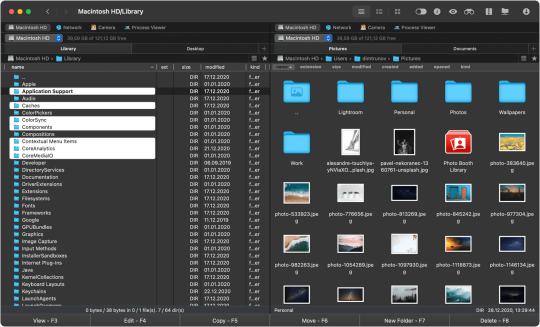
Document tasks line
Activities, for example, replicating documents over or erasing numerous clumps at a solitary snap could be made into a line for better execution all through the application, which further develops client experience and norms.
ZIP Support
The compress support was an astounding expansion and considered better pressure and extraction for all compresses and compacted documents. We saw that zips worked impeccably with our testing, yet configurations, for example, RAR were something that it required some investment with.
Root Access
The root access support is perhaps the best element in the event that you realize how to utilize it. Pull access is basic for any engineers and makers that work on coding or programming various projects. The root access is additionally utilized for testing beta or forthcoming programming for a superior encounter for the ordinary clients.
Get more details here: site.
The above highlights were only an intensive lesson on the document administrator, and the fundamental elements that we thought were awesome and most noticeably awful follow underneath.
The Best and the Worst
Lets get the most exceedingly terrible out first, as its something particularly required for the entire everyday errands and is something currently accessible with your inbuilt record supervisor. I'm discussing the FTP convention and the capacity to mount MTP and Android gadgets or the scarcity in that department. These highlights are a given to have however are excluded from the free form of One Commander and expect you to purchase the master rendition.
Locater upholds both MTP and FTP conventions, making it an incredible worth, however One Commander includes some significant downfalls for the necessities. We have different gadgets to test all parts of the product, and the free form didnt let us utilize any MTP gadget to move photographs or different records. Subsequently, purchasing the star permit key turned into our main arrangement. This isn't something we support, and we might want to see the minimum essentials remembered for the free form for future updates.
So, the need to purchase a genius pack for utilizing the essential elements is one of the most noticeably terrible parts of the whole experience and ought to be eliminated. The additional elements that the expert variant dont appear to be an intriguing worth.
As a rule, the worth it gives is disappointing, and the things we didnt like were:
The need of getting the expert form just to utilize fundamental highlights like MTP and FTP conventions
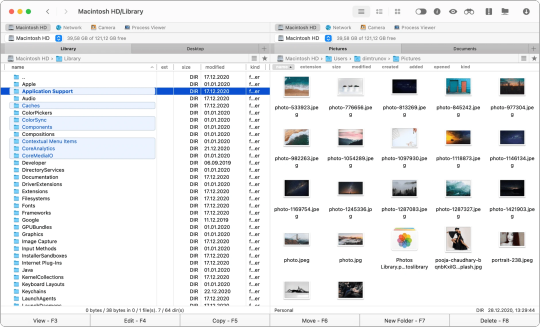
The costly expense of the permit coming at $30 for a solitary Mac
An inbuilt record chief, for example, Finder makes a superior showing with giving genius highlights to free
Presently, let us investigate the best component of the whole experience. Leave me alone forward and say that spending plan searcher or customers with a customary need dont require this document administrator, and it offers zero benefit for them. Nonetheless, if youre somebody who likes getting to distributed storage without a moment's delay or a superior web search tool for all documents on your gadget, it makes sense for getting it.
We thought the best component was the immediate association with the cloud, the interaction supervisor, and the coordinated terminal. These three joined made my internal nerd take off to the moon cheerfully.
The inherent Terminal has additionally been refreshed to modify textual style, emphasize shading, foundation, and permits power clients the proposal to execute all orders at notice, and the interaction supervisor stayed aware of all running applications in both the frontal area and foundation. WebDAV associations are likewise at bursting quick velocities. Authority One empowers search through Finder labels and augmentations, with the capacity to shading code and physically add documents to associated Dropbox or Google Drive accounts model.
The other component we saw about it was the different FTP documents and Network Transfers that worked faultlessly with simple exchanges all through gadgets. I by and large utilized it to move game documents and motion pictures to various PCs and gadgets, which had exactly the intended effect and conveyed move rates to many MB per sec and moved a solitary 12gig record in around 15 mins.
In Short, assuming youre a power client and a designer, the master bundle would be an incredible decision as it acquires highlights that would seem OK for advancement or testing projects or beta programming.
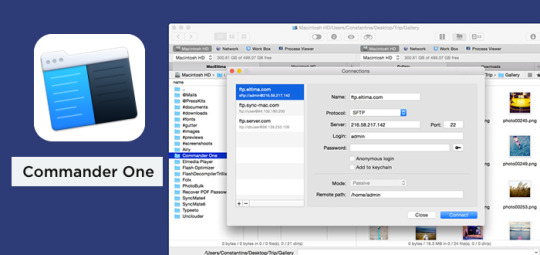
Some broad FAQs
Q: Is Commander One free?
Indeed, in any case, the preliminary rendition goes on for 15 days and, from that point onward, requires a permit key to open every one of the master highlights. Notwithstanding, if you dont need the expert elements, the program is completely allowed to use with highlights, for example, various boards to get to records and organizers and the capacity to make custom hotkeys.
Q: Is Commander One viable with Big Sur?
The Commander One application has been refreshed for similarity with macOS Big Sur, with redesigns for solidness, and acquires added usefulness as well. Since the document administrator is worked with Swift programming language, Commander One v3.0 is locally viable with each form of macOS X right now out there.
Q: Does Commander One work on M1 Macs?
The most recent age of M1 MacBooks and iMac are intended for quicker handling, lower heat transmission, and better graphical execution. Be that as it may, the processor of your macOS X framework doesn't influence what applications you can run on it. Subsequently, Commander One is altogether viable with the most recent age of M1 Macs accessible.
Q: Is Commander One accessible for Windows?
Indeed, there is a beta form that deals with Windows. We have tried it as well, and the UI looked excellent, however the bugs were something that frustrated the experience and ought to be something that would be improved with time and future updates.
Last Words
Albeit coming up short on the straightforward entry of the underlying Finder application, Commander One invites new elements and enhancements with respect to execution and performing multiple tasks that make it worth dishing out for, yet provided that youre searching for the Pro overhaul. In any case, if youre a normal client with no requirement for additional entrance and elements, then, at that point, the default document supervisor would serve you without any issues.
With this, we end the blog and trust that the audit may have helped search for something that could completely switch around your space and view on record chiefs. We might want to hear from you in the remark segment beneath about the experience of utilizing the record pilgrim and how it fared in your regular routine.
youtube
0 notes
Text
Install Ntfs For Mac

Install Ntfs-3g Mac High Sierra
Install Ntfs For Mac Free
Install Ntfs-3g For Mac Os X (free)
On you MAC, you can only read (open/copy) the contents of a NTFS file system, you can not perform any write operations like cut/delete. We have already covered How to Write to NTFS Drives in OS X Yosemite / El Capitan using Tuxera NTFS. It’s the easiest way to perform cut, delete or write new contents on an external NTFS drive in your Mac. But this software comes with only 15 days of trial and after the trial you need to purchase the license to continue the NTFS write support. The full license costs 25.00 EUR. But if you don’t want to spend money, here is a way to enable your Mac to support write operations on NTFS file systems for free.
Microsoft NTFS for Mac by Paragon Software provides blazing fast, unlimited read/write access to Microsoft NTFS hard drives, SSDs or thumb drives formatted for Windows computers! Microsoft NTFS for Mac by Paragon Software is a great upgrade to an exceptional cross-platform utility that’s easily worth the money, especially if you own the. Launch the installation process by clicking on the supplied DMG disk image (in our case it is NTFSforMacOSX.dmg). After the installation package is extracted you can choose whether to install/de-install the driver or read the manual or license agreement. Click NTFS for Mac OS X to install.
Install FUSE for OS X
First of all install FUSE for OS X. It works as the building block and allows to extend Mac OS X’s native file handling capabilities with the help of other third party file systems (like NTFS) on top of it. So here to install our next two utility softwares we first need to install FUSE for OS X.
NJGDSHYRT5VCS3LMH5XZ0L5V2X. Easeus data recovery wizard for mac. HCYZ5-YE7X3-UFZ8V-XTZ4G-YCF2X. MNVEIUC4CDS6V9MGF7VW2J8M.
Install Ntfs-3g Mac High Sierra
While installing it make sure to check “MacFUSE Compatibility Layer” to add support for backward compatibility.
Install NTFS-3G
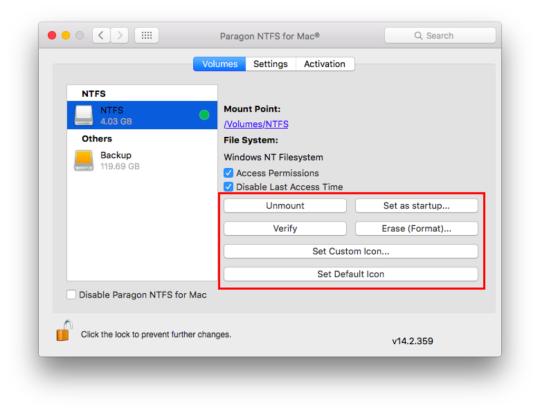
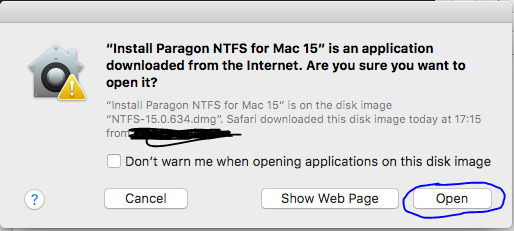
This is the actual their party driver, that will work on top of OSXFUSE to enable NTFS write on your Mac.
During installation you will get an option to choose Caching Mode. UBLIO cache increases the performance by creating an internet buffer. So every time during read or write operations instead of performing disk I/O it fetches or writes data to the buffer. For an example, if you edit a huge .log file, which is on your external NTFS disk. A copy of the file will first come to the internal buffer. Now every changes you make on this file will not immediately write to the disk, even if you save the file after every changes. Instead the changes will be stored in internal buffer. It will follow a lazy algorithm to write these changes to the actual disk. When you remove your external device by clicking on the remove button, all dirty blocks (changed data left in buffer) that yet have not been written to disk will be written to the External disk and after that your NTFS disk will get dismounted. As it reduces the necessity of I/O operations, the read-write performance gets improved.
But If you don’t safely remove the disk or if external disk goes offline because of power failure, you may lose some of your recent data or changes, as it could possible that those changes were still in buffer and did not get the time or force write instruction (during safely remove). Geforce 8500 for mac. As buffer is a temporary memory, those files/data will be lost in that case.
In case of No Caching mode, there will be no internal cache layer. Information/file will be fetched directly from the disk and changes will be written directly to the disk. So there is no chance of data lose. For daily usage, where you don’t need to handle large files, you may choose No caching.
That’s it, your system is absolutely ready to perform NTFS write operations.


Additional Patch: Install fuse-wait
Install Ntfs For Mac Free
fuse-wait comes with NTFS-3G, that you have already installed in previous step. But NTFS-3G has not been updated by it’s developer. Because of some changes in Mac OS X 10.7 fuse-wait(NTFS-3g) will display a timeout error whenever you will connect a NTFS drive. Though you will able to write to NTFS drives without any issue. But every time getting this error message seems annoying. To resolve it you need to install this fuse-wait patch.
Install Ntfs-3g For Mac Os X (free)
That’s it.
GenArts Sapphire Plug-ins is a product of GenArts, Inc.It is used to create the highest quality, most stunning visual effects in videos. It support most popular applications in all of post-production like Adobe After Effects, Adobe Premiere Pro, Autodesk Flame, AVID Media Composer, Blackmagic Fusion, Blackmagic DaVinci Resolve, Apple’s Final Cut Pro X, The Foundry’s NUKE, Sony Catalyst. FOR EDUCATIONAL PURPOSES ONLY! Link for sapphire: if you have any ques. Sapphire Lens Flares are cross-host, cross-platform (Windows, Mac, Linux) and work in 2D and 3D. And if that wasn’t enough, use the integrated Academy Award-winning Mocha technology to do fast and accurate motion tracking directly in the plugin. Perfect flares, wherever you need them. Sapphire plugins for after effects cc mac download.

0 notes
Text
Brew For Mac Os X

Brew For Mac Os X 10 11
Brew For Mac Os X El Capitan
Brew Pure-ftpd Mac Os X
What is FUSE for macOS?
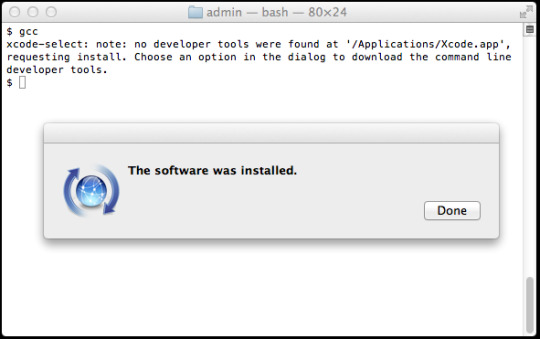
Mar 16, 2020 Homebrew is a package manager designed for installing UNIX tools and other open-source applications on Mac OS X. It will quickly download and install them, compiling them from source. Homebrew Cask extends Homebrew with support for installing binary apps — the kind you normally drag to your Applications folder from DMG files. According to the Homebrew installation page, if you have an older version of Mac OS X (Lion 10.7 or before), then you need to add the -insecure argument (or equivalently -k, making the full. A possible fix is to install and relink the python3 dependency from Homebrew. Brew update && brew install python3 && brew upgrade python3 brew link -overwrite python3 CLI version 1.x is installed. If an out-of-date version was installed, it could be because of a stale homebrew cache. Follow the update instructions. Proxy blocks connection.
FUSE for macOS allows you to extend macOS's native file handling capabilities via third-party file systems. It is a successor to MacFUSE, which has been used as a software building block by dozens of products, but is no longer being maintained.
Brew For Mac Os X 10 11
Features
As a user, installing the FUSE for macOS software package will let you use any third-party FUSE file system. Legacy MacFUSE file systems are supported through the optional MacFUSE compatibility layer.
As a developer, you can use the FUSE SDK to write numerous types of new file systems as regular user space programs. The content of these file systems can come from anywhere: from the local disk, from across the network, from memory, or any other combination of sources. Writing a file system using FUSE is orders of magnitude easier and quicker than the traditional approach of writing in-kernel file systems. Since FUSE file systems are regular applications (as opposed to kernel extensions), you have just as much flexibility and choice in programming tools, debuggers, and libraries as you have if you were developing standard macOS applications.
How It Works
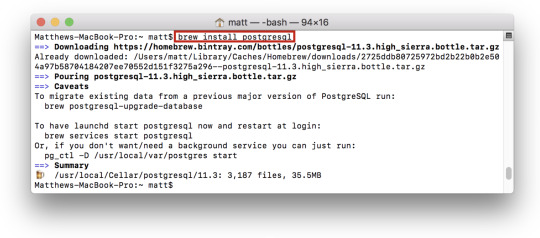
In more technical terms, FUSE implements a mechanism that makes it possible to implement a fully functional file system in a user-space program on macOS. It provides multiple APIs, one of which is a superset of the FUSE API (file system in user space) that originated on Linux. Therefore, many existing FUSE file systems become readily usable on macOS.
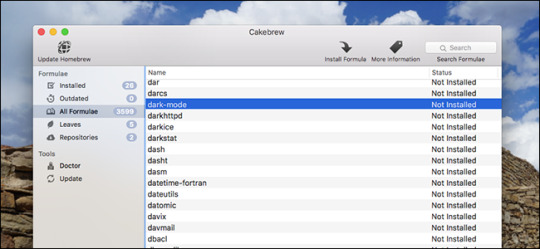
The FUSE for macOS software consists of a kernel extension and various user space libraries and tools. It comes with C-based and Objective-C-based SDKs. If you prefer another language (say, Python or Java), you should be able to create file systems in those languages after you install the relevant language bindings yourself.
Brew For Mac Os X El Capitan
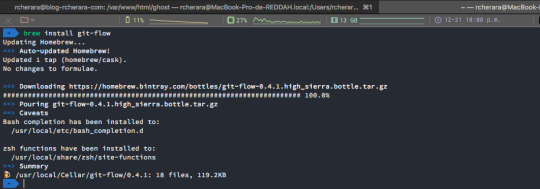
Brew Pure-ftpd Mac Os X
The filesystems repository contains source code for several exciting and useful file systems for you to browse, compile, and build upon, such as sshfs, procfs, AccessibilityFS, GrabFS, LoopbackFS, SpotlightFS, and YouTubeFS.

0 notes